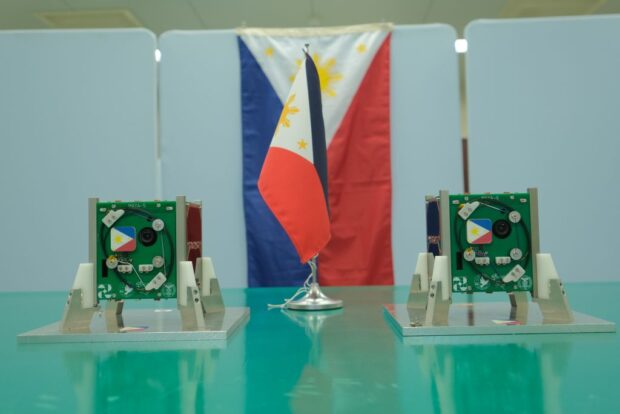MANILA, Philippines — Two new Philippine-made cube satellites were successfully launched into space near midnight on Monday, the Philippine Space Agency (PhilSA) said, bringing the country closer to its dream of becoming a major player in space technology.
Around 11:47 p.m. Manila time, the nanosatellites Maya-5 and Maya-6 took off aboard the SpaceX Falcon 9 rocket as part of its 28th commercial resupply mission to the International Space Station (ISS).
Once released at its destination, the pair of 1.15-kilogram “CubeSats,” as they are called, will move along an orbit similar to that of the ISS at an altitude of approximately 400 kilometers, the agency said.
Developed by UP scholars
This is the second time the Philippines has sent university-built CubeSats into space, and overall the sixth successful launch of Filipino-developed satellites made in collaboration with Japan, including Diwata-1 and Diwata-2, the developers said.
Named after the small brown-and-white bird native to the Philippines, the Maya satellites are envisioned to boost the country’s space ambitions and help relay data that can be used for weather monitoring and emergency announcements.
The new CubeSats were developed during the COVID-19 pandemic by eight University of the Philippines (UP) Electrical and Electronics Engineering Institute scholars: Anna Ruth Alvarez, Joseph Jonathan Co, Ronald Collamar, Angela Clarisse Chua, Chandler Timm Doloriel, Khazmir Camille Valerie Macaraeg, Genesis Remocaldo and Gio Asher Tagabi.
It was part of their course requirements for the institute’s nanosatellite engineering track under UP’s Master of Engineering program, implemented in collaboration with Japan’s Kyushu Institute of Technology (Kyutech).
The CubeSats were built under the Department of Science and Technology-funded Stamina4Space program, which hopes to empower local space science.
“With those small satellites, our country continues to fare in space for science and innovation,” said PhilSA Director General Joel Joseph Marciano Jr.
